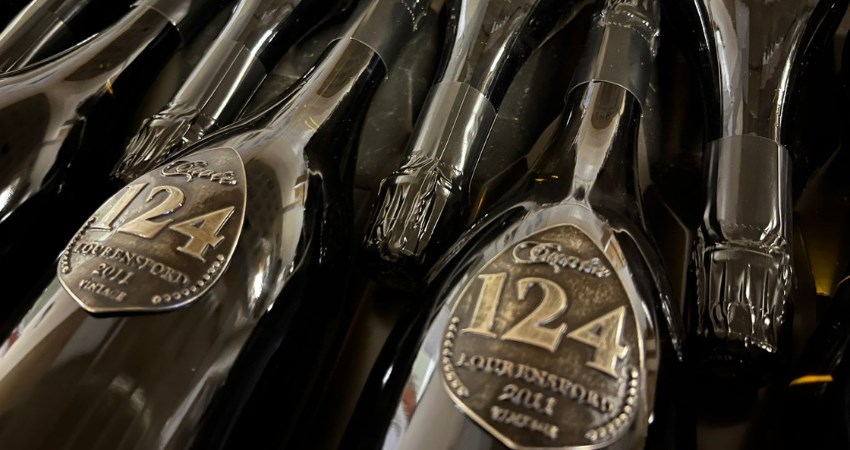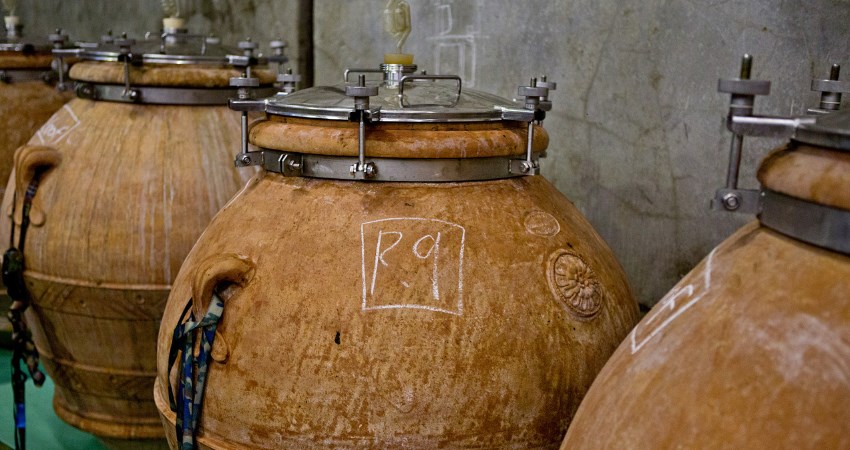
Bottles of 2011 Lourensford Cuvée 101.
Bubbly is not just for celebration, but corks certainly pop with each milestone producers of this style achieve. Three latest examples demonstrate that although Cap Classique may be 52 years old, its evolution is far from complete.
Graham Beck and Lourensford are in the process of releasing some of these wines that have spent the most time on the lees. Kleine Zalze hopes to break new ground with a special release that exclusively employed amphorae in the making of a Cap Classique.
This work and that of many other of South Africa’s bubbly producers will again be in the spotlight as South Africa celebrates Cap Classique Day today (1 September).
The style is officially recognised as having been pioneered in 1971, by Simonsig’s Frans Malan. He made the first bottle-fermented méthode champenoise wine in South Africa, at a time when sparkling wine comprised carbonated and mainly sweet products.
It is notable that while Champagne is traditionally made of Chardonnay, Pinot Noir and Pinot Meunier grapes, South Africa’s first Cap Classique was made with Chenin Blanc because it was what Frans Malan had at his disposal.
From this arose an industry, with Cap Classiques now being made in everything from the traditional to the non-traditional varieties. In addition to the most common examples that use the classic Chardonnay and Pinot Noir,South African wineries continue to explore other varieties.
Farms like De Morgenzon, Ken Forrester, Perdeberg, Wildekrans and Leopard's Leap took a leaf from Frans Malan’s book and produce very popular Cap Classiques from Chenin Blanc. But, there’s also bubbly examples made from Syrah, by Silverthorn; Grenache, by Darling Cellars; Merlot, by Black Oyster Catcher and Bein Family Wines; Pinotage, by Koelenhof; and Zinfandel, by Blaauwklippen.
Going for old
Grape varieties are not the only area of development for Cap Classique. Earlier this year, Graham Beck Wines announced the release of its Extra Brut 157.
Cellarmaster Pierre de Klerk calls it "a study in lees aging to see how a Cap Classique develops over time with extended lees contact".
While the regulated minimum ageing for Cap Classiques is 12 months, Graham Beck’s Extra Brut 157 spent 13 years and one month under crown cap, maturing.
It is made of traditional varieties, harvested in 2009, with 51% comprising Pinot Noir and the remainder Chardonnay. Only 2 200 bottles were produced.
Stretching the limits
Lourensford in Somerset West has also been letting its Cap Classique lie. Cellarmaster Hannes Nel anticipates that the wineries latest version – aged to 124 months – will be released by the end of the year. It follows the Lourensford Cuvée 101, a Cap Classique that spent just over eight years on the lees.
Grapes for that wine were harvested in early 2010 and has an alcohol of 11.5%. It was made from 88% Chardonnay and 12% Pinot Noir. Only 800 bottles were produced.
The 124-month bubbly was disgorged in January 2022, so has spent some time maturing under cork too. It comprises 87% Chardonnay with the remainder being Pinot Noir – all from Stellenbosch vineyards, harvested in 2011.
Ancient ways
Amphora vessels have made a comeback in winemaking although they’re vessels that were once used exclusively used for the practice. In making Cap Classique, the exclusive use of amphorae is unheard of until now.

Clay amphora vessels at Kleine Zalze, Stellenbosch.
At the time of writing this piece, Kleine Zalze was about to bottle the wine, where it will spend a few years before release.
"Kleine Zalze works with incredible vineyards around Stellenbosch and as is the case with most wine ideas, this one arose during a conversation in just such a place," says Kleine Zalze cellarmaster RJ Botha.
"The base wine is made from very old bushvine Chenin Blanc growing on weathered granite. We were looking to do something innovative, and it was this vineyard and our passion for sparkling wine that ignited the idea."
The wine is part of its Project Z range, for wines intended "to push the boundaries of creativity and innovation". It was also part of Project Z that terracotta amphorae were imported from Italy.
Only 850 bottles of the Cap Classique will be released.
The wine is made from a vineyard planted in 1977. Fruit was whole-bunch pressed with juice going into the amphorae immediately for fermentation. It also matured in the amphora for six months. It was bottled for the second fermentation. "The plan is to leave it for 18 to 24 months on the lees," says RJ, "And, we’re considering zero dosage."
His expectation is that the amphorae will deliver a textural wine without adding flavours that barrels would. "In this way, the fruit really expresses its sense of place," says RJ.